Meet two inspiring wāhine preserving and celebrating their indigenous culture
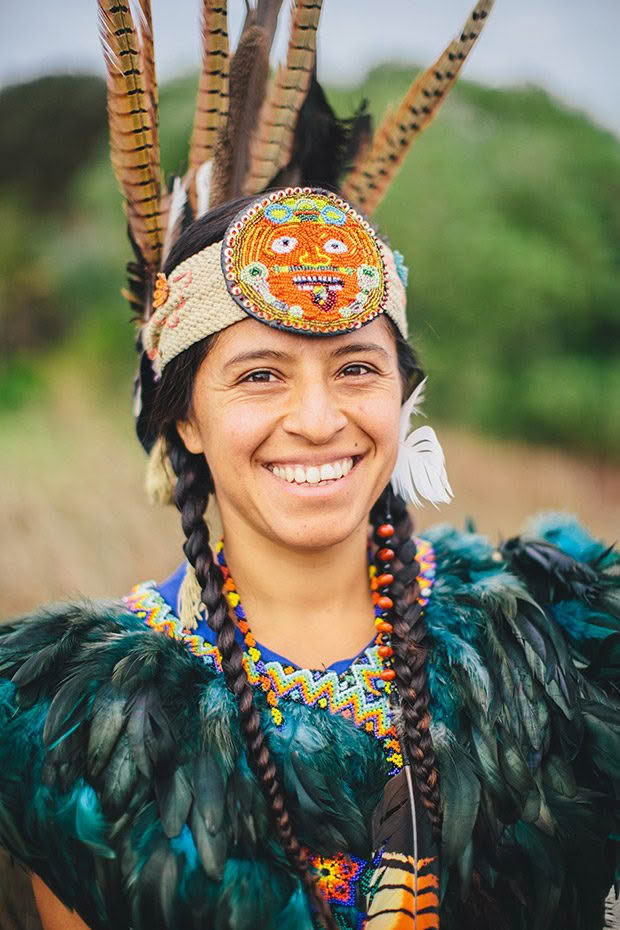
As part of her multimedia movement Nuku, journalist and author Qiane Matata-Sipu amplifies the voices of indigenous wāhine. Two women share their stories.
Words and photos: Extract from NUKU: Stories of 100 Indigenous Women
Andria Dafne Pablo Sanchez Vee’us Xiuh Janiki Yollotlpactli
Andria Dafne Pablo Sanchez Vee’us Xiuh Janiki Yollotlpactli (Mestiza, Nahua, México) practises and shares temazcal, kinam and tezcatlipoca practices of old central México. She is also a wisdom keeper of ancient Toltec traditions.
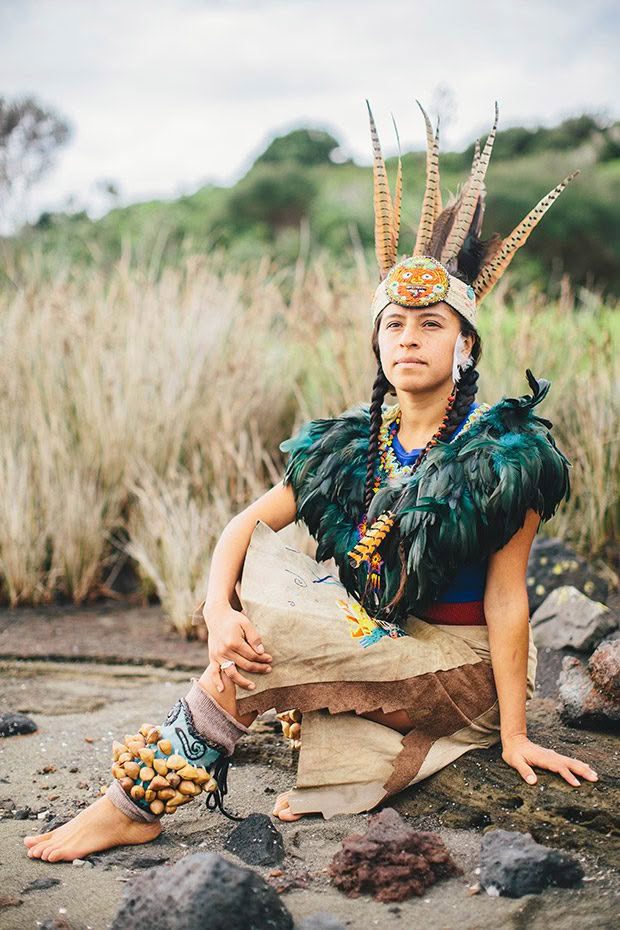
I am from the central valleys of México: an hour and a half from México City in a place called Texcoco. I’m from the Nahua people, the Méxica people, better known today as the Aztec.
The name Aztec came from the misunderstanding of Spanish colonists arriving in México. Many people think Aztecs were a culture from the past. But, they are still a people who are trying to revive their culture.
I grew up in a México that was racist towards our indigenous culture. I have the typical story of maybe three generations that have been fully colonized. The culture itself was encouraging us as Mexicans to become a white culture, to speak English, to get creams that lighten our skin. The colonizers told us we were going to be better off learning English if we wanted to be someone; to forget about the native language and anything of the native culture. Even at school — in history class — indigeneity always seemed like something really, really ancient or almost from a movie.
The indigenous call was always within me. Every time we went to México City, I’d see the ceremonies being carried out in the plaza — in the main square. I had this nostalgic feeling inside me, like a dream. I always would wish to be part of that.
I came here to New Zealand in 2005. It is very dangerous to be a woman in México. The drug cartels have taken over. My father knew it would be safer for me to live here. So, I came to study photography. My dream was to work for National Geographic and travel, photographing indigenous peoples. I also wanted to come to Aotearoa to connect with Māori culture.
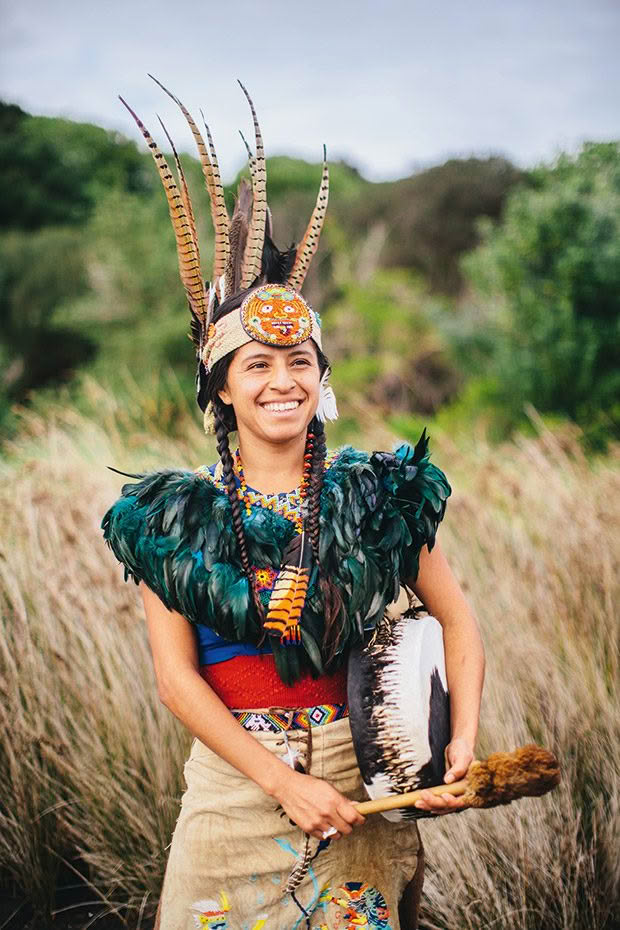
I was here for seven years without going back home. It was a journey of connecting more and more with te ao Māori until, eventually, I got my residency. At that point, I was living with these three amazing wāhine Māori who spoke full te reo — they were all my age, amazing friends of mine. I ended up traveling with a kuia for two weeks, and at the end of that journey, she said to me, “This is your home, but your kete is empty. You need to go back home to México to your ancestors. Your tūpuna (ancestors) are waiting there for you to give you something. When you come back, you will have something to share with us.”
At that moment, I had been unable to share. That was a strong tohu (direction) for me. Eventually, it happened. I went back home, and as soon as I got there, the door opened up and everything I needed was there, waiting. I connected with this grandmother and grandfather, who knew that I was going to come back to Aotearoa; they felt like I had a strong mission. They started teaching me the old ways and took me to become a dancer of Xochimeztli, which is another practice I walk now, as well as the temazcal — a sweat lodge, a sacred ritual of cleansing. I’ve also been part of the chanting group there for the past six years.
A couple of years ago, I asked the grandmother if I was able to bring a drum here to share with the people. She granted me permission. So, we brought this drum back that recalibrates our heartbeat with the heartbeat of the earth. These are now things I can share, from my kete to your kete.
I feel like being an indigenous woman today is the gift of finding balance, because we have all the tools to find that balance and start to open up that flower of knowledge again. It’s our responsibility to look after it so people can see the delicacy of that flower that’s only going to bring beauty into this world.
Nikau Hindin
Nikau Hindin (Te Rarawa, Ngāpuhi) is an artist and bark-cloth maker, reviving the art of aute. Her pieces are adorned with celestial patterns, combining ancestral knowledge of kapa and star navigation.
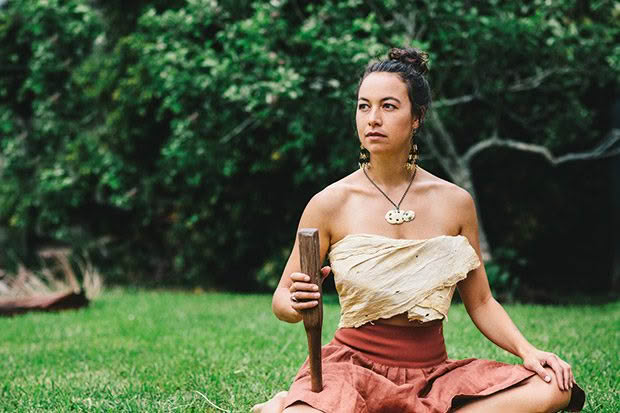
My nana was an artist; my mum was creative, too. Her creativity gained her employment, so I understood that as a pathway forward into adulthood. When I was little, I always used to say, “I’m going to be an artist.”
Art school is difficult because it is grounded in Western philosophy. It’s a critic-based structure. When you are young — making art, experimenting — and when you’re Māori and probably making work about the whenua and about colonization and racism, I think putting it into a critical context is painful.
I am grateful for my time at art school — I learned a lot. But I dropped out in my second year. I applied to do an exchange to Hawai’i, which was the best decision I could have made.
In Hawai’i, I did painting. I did printmaking. I learned fibre arts. I did carving with [sculptural artist] Rangi Kipa — who was over there on a native exchange — basically living under his wing every single day, making kai and just on the wānanga (learning) with him. It changed my life.
Because aute uses natural fibres and pigments, I had such an affinity with it. In my research, I was told the aute plant didn’t do so well in the climate here, but it’s very much in our language as manu aute, our kites. We used it in adornment in our ears, and I think we would have probably used it for mārō (loincloth), because it’s so soft. Because harakeke was a resource that was readily available, it probably replaced aute as a commonly used plant in our history.
The first thing I did in the process was look at our patu aute, our beaters, at the Auckland Museum. I had to make mine the old way, carving my grooves with sharks’ teeth, scraping the handle with pipi shells, grinding them with hōanga sandstones. It’s a valuable process to go through.
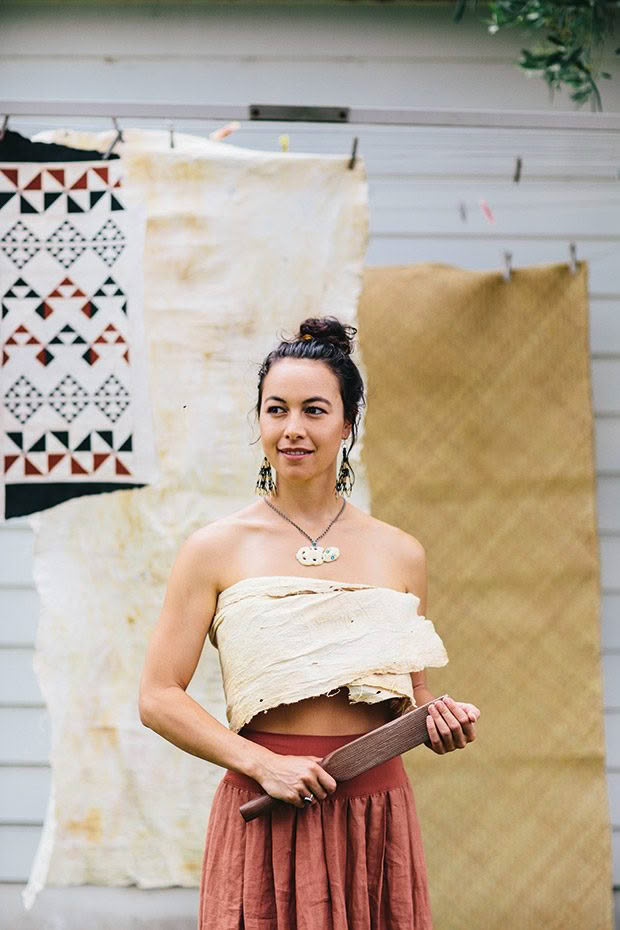
Slowing down and connecting with your environment, understanding the resources that are available to us in the natural environment, connecting to the taiao (the natural earth) on a much deeper level and connecting with our tūpuna while you are doing it — you are literally embodying their movements.
I returned to art school and finished with honours. I then returned to Hawai’i to do my master’s. I learned to cultivate uru aute, to prune them, the kinds of environments they like, and when and how to harvest. The quality of your plants determines the quality of your aute. I’m glad to be a part of this massive resurgence. I was inspired by the waka kaupapa and Hōkūle’a waka hourua that was built 44 years ago.
I am really interested in the patterns and the cycles of our environment and reconnecting with the maramataka (traditional Māori calendar) and the seasonal changes of the stars. I base all my star maps off the star compass, the conceptual framework for navigating that was passed on by many of our greatest navigators.
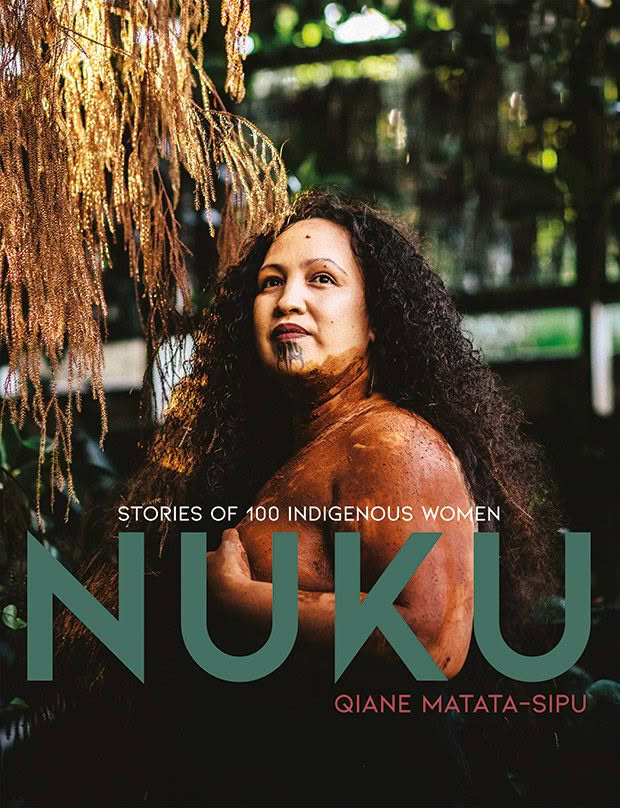
Extracted from NUKU: Stories of 100 Indigenous Women by Qiane Matata-Sipu, 2021. nukuwomen.co.nz
Love this story? Subscribe now!
 This article first appeared in NZ Life & Leisure Magazine.
This article first appeared in NZ Life & Leisure Magazine.
